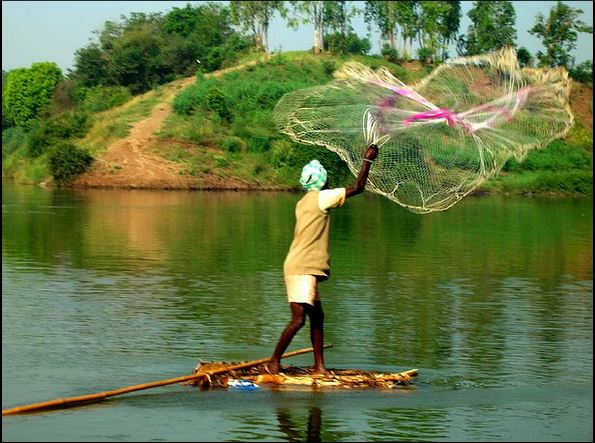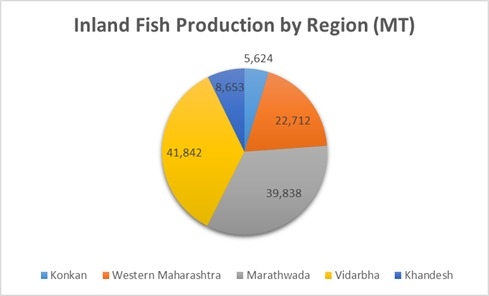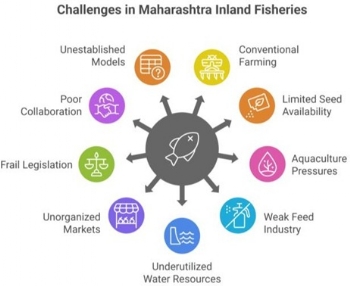Designing a Comprehensive Policy for Freshwater Fisheries Development in Maharashtra
Total Views |
The growth of marine fishing in Maharashtra and its comparative and quantitative study, the living standards of the Koli community and their fisheries business, the study of freshwater aquaculture, as well as the impact of village prosperity and climate changes on these businesses, can all be studied under separate subjects. For marine fishing, statistical approaches can be employed using data and comparative charts, while the study of the Koli community and commercial fisheries can be conducted from sociological and economic perspectives through field visits, interviews, and discussions. In freshwater aquaculture, the study can focus on production techniques, economic outcomes, and market impact, whereas the effect of environmental changes on business can be measured through observation and data collection. In the field of humanities, coordinating these different subjects and integrating both statistical and social data for analysis is a challenging yet valuable task.

Maharashtra state recently witnessed an increase in marine fish production with total fish production increased from 5.90 lakh MT in 2022–23 to 7.00 lakh MT in 2023–241 and the sector continues to be dominated by marine sources. While inland production show some growth but still contributes a smaller share compared to marine output. This shows that Maharashtra's vast reservoir network, tanks and water bodies remain vastly underutilized (The area suitable for inland water fishing in the State is 3.90 lakh ha) and need for stronger policy and investment focus on inland fisheries to balance the production base. The Maharashtra should act quickly to transform


this sleeping giant into an engine for rural prosperity, nutritional security and climate-resilient livelihoods
|
Bringing additional area under scientific culture positioning Maharashtra among India's top 5 inland fish-producing states and a leader in sustainable aquaculture. Between 2021–22 and 2024–25, Maharashtra has approvals worth Rs 1,447 crore under the Pradhan Mantri Matsya Sampada Yojana (PMMSY), which covers 4,174 beneficiaries. Despite this sizeable allocation, the State’s uptake remains sluggish. A dedicated state-level fisheries policy could provide the institutional framework to absorb these funds. |
 |
https://cdnbbsr.s3waas.gov.in/s349d4b2faeb4b7b9e745775793141e2b2/uploads/2025/01/2025030788773769.pdf
more effectively, pilot cage culture in large reservoirs.
Building Blocks of an Effective Policy
1. Resource Optimization Through Science-Led Management: Maharashtra's reservoirs and tanks require systematic mapping and productivity assessments. Many water bodies suffer from habitat destructions, encroachment and pollution2. A robust policy would help to deal with these challenges and adopting and incorporating emerging technologies like artificial intelligence for monitoring fish health and automated feeding systems in policy will enhance productivity and efficiency emulating successful models from Andhra Pradesh3.
2. Cooperative Empowerment and Institutional Strengthening: Coastal cooperatives like Raigad fisheries cluster have grown stronger, we need encourage cooperative model in inland fisher groups which remain fragmented. Policy would facilitate establishment of Fisheries Producer Organizations (FPOs), provide capacity-building support and ensure credit access.
3. Infrastructure and Value Chain Integration: The study by the Dept of Fisheries, Ministry of Fisheries, Animal Husbandry and Dairying shows an average post harvest loss of 8.84% for inland fisheries. While the high losses during handling and transportation is due to inadequate cold chain infrastructure, lack of hygienic handling practices and delays in market access. Strategic investments through policy would reduce wastage, better price realization and connect farmers to urban markets and export channels.
4. Technology, Extension, and Skill Development: Most inland fishers work with traditional knowledge and minimal exposure to modern aquaculture techniques. A policy- driven extension network can leveraging ICAR research, KVKs and mobile advisory platforms to disseminate best practices on feed management, water quality monitoring and disease control.
Anchoring policy in science-led resource management, strengthening cooperatives, resilient infrastructure and effective PMMSY fund absorption can turn today’s scattered efforts into a state- wide value chain. A department with a strong policy can lift rural livelihoods, cut post-harvest losses and position Vidarbha to Konkan as India’s freshwater growth corridor.
https://www.researchgate.net/publication/315004804_Cage_culture_an_approach_of_increasing_fish_production_in_the_reservoirs_of_Maharashtra_India
https://www.researchgate.net/publication/315004804_Cage_culture_an_approach_of_increasing_fish_production_in_the_reservoirs_of_Maharashtra_India

